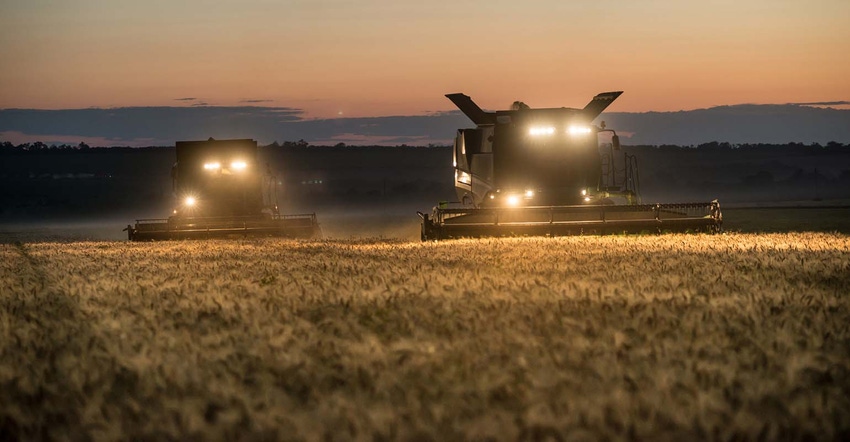
For a second straight week, analysts anticipated USDA would lower its corn and soybean crop quality ratings, but the agency held steady in its weekly Crop Progress report. Spring wheat quality ratings did fall incrementally, however.
Industry analysts again predicted USDA would lower its crop quality ratings for corn from 72% rated in good-to-excellent conditions to 71% for the week ending July 29. But USDA held steady across the board, rating 22% of the crop in excellent condition and 50% of the crop in good condition. The agency made no changes for the rest of the crop, either, rating 19% in fair condition and the remaining 9% as poor or very poor.
Physiologically, the 2018 corn crop continues to pace about a week ahead of prior years, with 91% reaching silking stage, up from 81% a week ago – compared to 2017’s pace and the five-year average, both at 82%. Another 38% of the crop has reached dough stage, up from 18% a week ago, and moderately besting 2017’s pace of 21% and a five-year average of 20%.
USDA also held the 2018 U.S. soybean crop quality steady, at 70% good-to-excellent, although the agency moved the split from 52/18 to 53/17. Analysts expected a reduction to 69% overall. The rest of this year’s soybean crop is rated 22% fair, 6% poor and 2% very poor.
Physiologically, 86% of the soybean crop is now blooming, up from 78% a week ago, and still ahead of 2017’s pace of 80% and the five-year average of 77%. Another 60% of the crop is setting pods, jumping up from 44% the prior week, 45% from the same time in 2017 and a five-year average of 41%.
Spring wheat crop condition slipped from 79% the prior week to 78%. Analysts were expecting that number to fall to 77%. Another 18% of the crop is in fair condition, with the final 4% rated poor or very poor.
Spring wheat harvest has also begun, reaching 4% as of July 29. Harvest begins moderately behind the pace of 2017, which had reached 8% this time last year but is even with the five-year average of 4%. South Dakota has jumped ahead, completing 35% of its spring wheat harvest, with the other top six production states making only single-digit progress so far.
Winter wheat progress inches toward completion, meantime, moving from 80% complete the prior week to 85%. That progress is mostly in line with 2017’s pace of 87% and a five-year average of 86%.
Sorghum crop condition improved from 49% rated good-to-excellent the prior week to 52% as of July 29. Fifty-four percent of the crop is now headed (up from 47% last year), with another 26% in the coloring stage (up from 23% last year).
Farther south, 43% of the U.S. cotton crop is rated good-to-excellent, up from 39% the week prior. High-quality crop ratings in parts of the Mid-South and Southeast are pulling up the nationwide average despite relatively poor quality ratings in the Southwest.
About the Author(s)
You May Also Like






